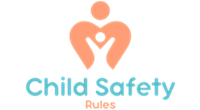Ensuring the safety and well-being of children is a crucial responsibility that falls on the shoulders of not just parents, but also schools and communities. Children spend a significant amount of time in school and within their communities, making it essential for these environments to be safe and nurturing spaces for them to learn and grow.
Schools play a key role in ensuring child safety by creating a safe and secure learning environment for students. This includes implementing policies and procedures to prevent bullying, harassment, and violence, as well as providing resources for students who may be experiencing abuse or neglect. Schools should also have systems in place to ensure the physical safety of students, such as emergency drills and security measures.
Additionally, schools can educate students on personal safety skills, such as stranger danger awareness, how to recognize and report abuse, and how to navigate potentially dangerous situations. By empowering students with this knowledge, schools can help them protect themselves and their peers from harm.
Communities also have a vital role to play in ensuring child safety. Strong and supportive communities can provide a protective network for children, offering them a sense of belonging and connection that can help prevent risky behaviors and situations. Community members can serve as positive role models for children, providing guidance and support as they navigate the challenges of growing up.
Communities can also work together to create safe spaces for children to play and socialize, such as parks, community centers, and after-school programs. By investing in these resources, communities can provide children with opportunities for healthy and constructive activities, reducing the likelihood of them engaging in risky behaviors or getting into dangerous situations.
It is essential for schools and communities to work together to ensure the safety of children. By collaborating and sharing resources, they can create a strong support system that protects children from harm and enables them to thrive. This may involve coordinating efforts to address issues such as bullying, substance abuse, and mental health, as well as providing access to resources and services that support the well-being of children and their families.
Ultimately, the safety and well-being of children are a shared responsibility that requires the active involvement of schools, communities, parents, and other stakeholders. By working together to create a safe and nurturing environment for children to learn and grow, we can ensure that every child has the opportunity to reach their full potential and lead a happy and healthy life.










